Sergey Rachmaninoff: The 100 most inspiring musicians of all time
Composer Sergey Vasilyevich Rachmaninoff was the last great figure of the tradition of Russian Romanticism and a leading piano virtuoso of his time. (b. March 20 [April 1, New Style], 1873, Oneg, near Semyonovo, Russia—d. March 28, 1943, Beverly Hills, Calif., U.S.).
He is especially known for his piano concerti and the piece for piano and orchestra entitled Rhapsody on a Theme of Paganini (1954).
Please, subscribe to our Library.
If you are already a subscriber, please, check our NEW SCORES’ page every month for new sheet music. THANK YOU!
Early Life
Rachmaninoff was born on an estate belonging to his grandparents, situated near Lake Ilmen in the Novgorod district. His father was a retired army officer and his mother the daughter of a general. The boy was destined to become an army officer until his father lost the entire
family fortune through risky financial ventures and then deserted the family. Young Sergey’s cousin Aleksandr Siloti, a well-known concert pianist and conductor, sensed the boy’s abilities and suggested sending him to the noted teacher and pianist Nikolay Zverev in Moscow for his piano studies.
It is to Zverev’s strict disciplinarian treatment of the boy that musical history owes one of the great piano virtuosos of the 20th century. For his general education and theoretical subjects in music, Sergey became
a pupil at the Moscow Conservatory.
At age 19 he graduated from the Conservatory, winning a gold medal for his one-act opera Aleko (after Aleksandr Pushkin’s poem Tsygany [“The Gypsies”]). His fame and popularity, both as composer and concert pianist, were launched by two compositions: the Prelude in C-sharp Minor, played for the first time in public on Sept. 26, 1892, and his Piano Concerto No. 2 in C Minor, which had its first performance in Moscow on Oct. 27, 1901. The former piece, although it first brought Rachmaninoff to public attention, was to haunt him throughout his life—the prelude was constantly requested by his concert audiences.
The concerto, his first major success, revived his hopes after a trying period of inactivity.
In his youth, Rachmaninoff was subject to emotional crises over the success or failure of his works as well as his personal relationships. Self-doubt and uncertainty carried him into deep depressions, one of the most severe of which followed the failure, on its first performance in March 1897, of his Symphony No. 1 in D Minor.
The symphony was poorly performed, and the critics condemned it. During this period, while brooding over an unhappy love affair, he was taken to a psychiatrist, Nikolay Dahl, who is often credited with having restored the young composer’s selfconfidence, thus enabling him to write the Piano Concerto No. 2 (which is dedicated to Dahl).
Major Creative Activity
At the time of the Russian Revolution of 1905, Rachmaninoff was a conductor at the Bolshoi Theatre. Although more of an observer than a person politically involved in the revolution, he went with his family, in
November 1906, to live in Dresden. There he wrote three of his major scores: the Symphony No. 2 in E Minor (1907), the symphonic poem The Isle of the Dead (1909),and the Piano Concerto No. 3 in D Minor (1909).
The last was composed especially for his first concert tour of the United States, highlighting his much-acclaimed pianistic debut on Nov. 28, 1909, with the New York Symphony under Walter Damrosch. Piano Concerto No. 3 requires great virtuosity from the pianist; its last movement is a
bravura section as dazzling as any ever composed.
In Philadelphia and Chicago he appeared with equal success in the role of conductor, interpreting his own symphonic compositions. Of these, the Symphony No. 2 is the most significant: it is a work of deep emotion and haunting thematic material. While touring, he was invited to become permanent conductor of the Boston Symphony, but he declined the offer and returned to Russia in February 1910.
The one notable composition of Rachmaninoff ’s second period of residence in Moscow was his choral symphony The Bells (1913), based on Konstantin Balmont’s Russian translation of the poem by Edgar Allan Poe. This work displays considerable ingenuity in the coupling of choral and orchestral resources to produce striking imitative and textural effects.
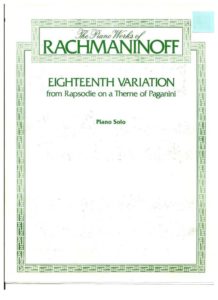
Later Years
After the Russian Revolution of 1917, Rachmaninoff went into his second self-imposed exile, dividing his time between residences in Switzerland and the United States. Although for the next 25 years he spent most of his time
in an English-speaking country, he never mastered its language or thoroughly acclimatized himself. With his family and a small circle of friends, he lived a rather isolated life.
He missed Russia and the Russian people—the sounding board for his music, as he said. And this alienation had a devastating effect on his formerly prolific creative ability. He produced little of real originality, but rewrote some of his earlier work. Indeed, he devoted himself almost entirely to concertizing in the United States and Europe, a field in which he had few peers.
His only substantial works from this period are the Symphony No. 3 in A Minor (1936), another expression of sombre, Slavic melancholy, and the Rhapsody on a Theme of Paganini for piano and orchestra, a set of variations on a violin caprice by Niccolò Paganini. Rachmaninoff’s last major work, the Symphonic Dances for orchestra, was composed in 1940, about two years before his death.
Sheet Music Download.
Best of Rachmaninoff
Rachmaninoff is widely considered one of the finest pianists of his day and, as a composer, one of the last great representatives of Romanticism in Russian classical music. Early influences of Tchaikovsky, Rimsky-Korsakov, and other Russian composers gave way to a personal style notable for its song-like melodicism, expressiveness and his use of rich orchestral colors.The piano is featured prominently in Rachmaninoff’s compositional output, and through his own skills as a performer he explored the expressive possibilities of the instrument.
Track List:
(0:00) Piano Concerto No.2 in Cm Op.18 – I. Moderato (9:19) Piano Concerto No.2 in Cm Op.18 – II. Adagio sostenuto (19:50) Piano Concerto No.3 in Dm Op.30 – I. Allegro (34:46) Piano Concerto No.4 in Gm Op.40 – III. Allegro vivace (43:26) Rhapsody on a Theme of Paganini Op.43 (1:04:04) Symphony No.1 in Dm Op.13 – I. Grave – Allegro ma non troppo (1:17:52) Symphony No.2 in Em Op.27 – III. Adagio (1:33:00) Symphonic Dances Op.45 – I. Non allegro
(1:44:59) Prelude Op.23 No.02 in Bbm – Maestoso (1:48:41) Prelude Op.23 No.10 in Gbm – Largo (1:52:49) Morceaux de Salon Op.10 – No.5 in G – Humoresque (1:59:57) Etudes-tableaux Op.39 – Allegro moderato – Tempo di marcia in D No.9 (2:03:37) Cello Sonata in Gm Op.19 – III. Andante (2:09:19) The Bells Op.35 – III. Presto (2:18:10) Vespers Op.37 – Bless the Lord, O my soul (2:23:03) Francesca da Rimini Op.25 – I. Prologue
Performers:
Piano Concertos No. 2, No. 3, No. 4 and Rhapsody on a Theme of Paganini (Earl Wild (pianist) Royal Philharmonic Orchestra, Jascha Horenstein (conductor) Symphony No.1 in Dm Op.13 – I. Grave – Allegro ma non troppo (USSR Ministry of Culture Symphony Orchestra and Gennady Rozhdestvensky (conductor)
Symphony No.2 in Em Op.27 – III. Adagio (London Symphony Orchestra and Gennady Rozhdestvensky (conductor) Symphonic Dances Op.45 – I. Non allegro (Russian State Symphony Orchestra and Valery Polyansky (conductor) Prelude Op.23 No. 2 and No. 10 (Santiago Rodriguez (piano) Morceaux de Salon Op.10 – No.5 in G – Humoresque (Alexander Ghindin (piano) Etudes-tableaux Op.39 – Allegro moderato – Tempo di marcia in D No.9 (Nikolai Lugansky (piano)
Cello Sonata in Gm Op.19 – III. Andante (Yakov Flier (piano) Daniil Shafran (cello) The Bells Op.35 – III. Presto (Olga Lutsiv-Ternovskaya (soprano) Leonid Bomstein (tenor) Vyacheslav Pochapsky (bass) State Symphony Capella of Russia and Valery Polyansky (conductor)
Vespers Op.37 – Bless the Lord, O my soul (Olga Borusene (soprano) Yuri Korinnyk (tenor) Mykhaylo Tyshchenko (tenor) The National Academic Choir of Ukraine “Dumka” and Valery Polyansky (conductor) Francesca da Rimini Op.25 – I. Prologue (Bolshoi Orchestra and Andrei Chistyakov (conductor)
Browse in the Library:
| Artist or Composer / Score name | Cover | List of Contents |
|---|---|---|
| All That Jazz piano-vocal Arrangement |
 |
|
| All The Things You Are (Guitar And Tabs) | All The Things You Are (Guitar And Tabs) | |
| All The Things You Are (Guitar And Tabs) (Musescore File).mscz | ||
| All The Things You Are By Jerome Kern Guitar Transcription |
 |
|
| All The Things You Are Jerome Kern Oscar Hammerstein 2nd 1940 Jazz Standard (Vintage sheet music) |
 |
|
| All Time Standards (Songbook) Jazz Guitar Tablature Chord Melody Solos (Jeff Arnold) |
 |
All Time Standards (Songbook) Jazz Guitar Tablature Chord Melody Solos (Jeff Arnold) |
| All Time Standards Piano (Arr. Gabriel Bock) |
 |
All Time Standards Piano (Arr. Gabriel Bock) |
| All You Need Is Ears George Martin with Jeremy Hornsby 1979 (Book) The story o the recording genius who created The Beatles |
 |
|
| Allan Holdsworth Just for the curious book Guitar with Tablature |
 |
|
| Allan Holdsworth Melody Chords For Guitar |
 |
|
| Allan Holdsworth Super Guitarist with TABs |
 |
Allan Holdsworth Super Guitarist with TABs |
| Alle prese con una verde Milonga (Paolo Conte) | ||
| Allevi, Giovanni – Back To Life |
 |
|
| Allie Wrubel – Gone with the Wind |
 |
|
| Allman Brothers Guitar Songbook |
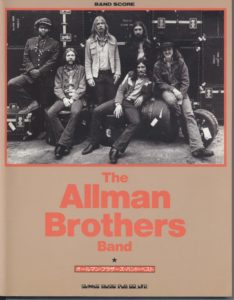 |
Allman Brothers Guitar Songbook |
| Allman Brothers, Best Of The (Piano, Vocal, Guitar) |
 |
Allman Brothers, Best Of The (Piano, Vocal, Guitar) |
| Allman Brothers, The – The Definitive Collection For Guitar Vol 1 with Tablature |
 |
Allman Brothers, The – The Definitive Collection For Guitar Vol 1 |
| Alma Redemptoris Mater |
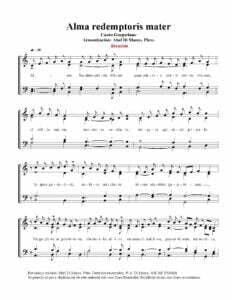 |
|
| Almeno tu nell’universo (Mia Martini) | ||
| Almir Chediak Ivan Lins Guitar Songbook Vol 2 |
 |
Ivan Lins Guitar Songbook Vol 1 by Almir Chediak |
| Alok – Hear Me Now Sheet Music |
 |
|
| Alone together (Howard Dietz & Arthur Schwartz) | Alone together (Howard Dietz Arthur SchwArtz) | |
| Alone Together (Musescore File).mscz | ||
| Alone Togheter Guitar Solo Transcription Jazz Standard |
 |
|
| Alphaville Forever Young (piano & Guitar) |
 |
Alphaville Forever Young (piano & Guitar) |
| Also Sprach Zarathustra Op. 30 – Richard Strauss (Musescore File).mscz | ||
| Alternative Rock Sheet Music Collection |
 |
Alternative Rock Sheet Music Collection |
| Always on my mind – Elvis Presley – easy arrangement for piano, with fingering |
 |
|
| Amadeus – W.A. Mozart (film score arr. for piano solo by D. Fox) |
 |
Amadeus – W.A.Mozart |
| Amadeus (original soundtrack piano solo arrangements) |
 |
Amadeus (Film score book) Piano Solos |
| Amalia Rodriguez FADOS Melodias De Sempre (GUITAR) |
 |
Amalia Rodriguez FADOS Melodias De Sempre (GUITAR) |
| Amando amando (Renato Zero) | ||
| Amar Pelos Dois (Salvador Sobral) | ||
| Amarcord (Nino Rota) | ||
| Amazing Grace – Tradicional (Piano ) |
 |
|
| Amazing Grace Traditional (Jazzy ver. sheet music) |
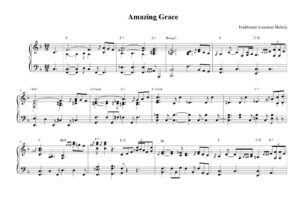 |
|
| Amazing Phrasing – Guitar 50 Ways to Improve Your Improvisational Skills (Guitar TABs Amazing Phrasing) (Tom Kolb) |
 |
Amazing Phrasing – Guitar 50 Ways to Improve Your Improvisational Skills (Guitar TABs Amazing Phrasing) (Tom Kolb) |
| Amelie Poulain – 6 pieces for piano – Yann Tiersen – Yann Tiersen |
 |
 |
| America (My Country ‘Tis of Thee Easy Piano Level 2 |
 |
|
| America Greatest Hits Piano Vocal Guitar chords |
 |
America Greatest Hits Piano Vocal Guitar chords |
| America Greatest Hits (piano & Guitar) |
 |
America greatest |
| America Horse With No Name Piano vocal | America Horse With No Name Piano vocal | |
| America’s Songs The Stories Behind The Songs Of Broadway, Hollywood, And Tin Pan Alley (Philip Furia, Michael Lasser) Book |
 |
|
| American Folk Songs For Guitar with Tablature |
 |
American Folk songs |
| American Folk Songs, My First Book of – Bergerac |
 |
|
| American Indian Melodies A. Farwell Op.11 (1901) |
 |
American Indian Melodies A. Farwell Op.11-min |
| American Pie (sheet music) |
 |
|
| American Popular Music (Book) by Larry Starr and Christopher Waterman |
 |
|
| Americana – Alegre, Magín (Guitarra) | Americana – Alegre, Magín (Guitarra) | |
| Amici Miei (Carlo Rustichelli) | ||
| Amor mio (Battisti) | ||
| Amore bello (Claudio Baglioni) | ||
| Amy Beach – Op.15 Four Sketches in Autumn |
 |
|
| Amy Grant – Breath Of Heaven | ||
| Amy MacDonald This Is The Life |
 |
AMY MACDONLAD |
| Amy Winehouse – Valerie |
 |
|
| Amy Winehouse – Valerie (sheet music) |
 |
|
| Amy Winehouse Amy Amy Amy |
 |
|
| Amy Winehouse Back To Black Songbook |
 |
Amy Winehouse Back To Black Songbook |
| Amy Winehouse Frank Songbook |
 |
Amy Winehouse Frank |
| Amy Winehouse I Heard Love Is Blind |
 |
|
| Amy Winehouse Just Friends |
 |
|
| Amy Winehouse Rehab |
 |
|
| Amy Winehouse You Know Im No Good |
 |
|
| An affair to remember (Harry Warren) | ||
| An American In Paris An George Gershwin (Concert Band)An American In Paris An George Gershwin (Concert Band) Arr. by Naohiro Iwai |
 |
|
| An American Tail – The Marketplace – James Horner | ||
| An Introduction To Bach Studies (eBook) |
 |
|
| An Irish Blessing (Musescore File).mscz | ||
| An Irish Blessing (SATB) Choral | An Irish Blessing (SATB) | |
| Analisis musical claves para entender e interpretar la Música (M. y A. Lorenzo) Español |
 |
|
| Analysis Of Tonal Music An Schenkerian Approach Allen Cadwallader and David Gagné (Book) |
 |
|
| Analyzing Bach Cantatas by Eric Chafe (eBook) |
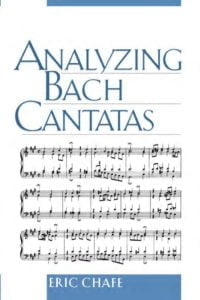 |
|
| Analyzing Schubert by Suzannah Clark (Cambridge Un. Press) (eBook) |
 |
|
| Anastacia Not That Kind Songbook |
 |
Anastacia songbook |
| Anastasia Once Upon A December arr. by John Brimhall (Piano Solo 2 Versions Easy And Intermediate) |
 |
|
| Anastasia Sheet Music songbook Piano & vocal |
 |
Anastasia Sheet Music songbook Piano & vocal |
| Ancora ancora ancora (Mina) | ||
| Ancora qui (Django Unchained) Elisa – Ennio Morricone | ||
| And the Waltz goes on (Anthony Hopkins) | ||
| Andante (from String Quartet op. 22) P. I. Tchaikovsky | ||
| Anderson Freire – So Voce Piano |
 |
|
| Andras Schiff – Music Comes Out Of Silence Book |
 |
|
| Andre Gagnon – L’air Du Soir |
 |
|
| Andre Gagnon – Le Reve De L’automne (sheet music Collection) |
 |
Andre Gagnon – Le Reve De L’automne (sheet music Collection) |
| Andre Gagnon – Les Jours Tranquilles | Andre Gagnon – Les Jours Tranquilles | |
| Andre Gagnon – Meguriai |
 |
|
| Andre Gagnon – Nelligan |
 |
|
| Andre Gagnon – Petite Nostalgie |
 |
|
| Andre Gagnon – Reves D’Automne | Andre Gagnon – Reves D’Automne | |
| Andre Gagnon – The Very Best Of Andre Gagnon (Sheet Music Songbook) |
 |
Andre Gagnon – The Very Best Of Andre Gagnon (Sheet Music Songbook) |
| Andre Gagnon Ciel D’Hiver |
 |
|
| Andre Gagnon Entre Le Boeuf et l’Ane Gris Musique Traditionelle |
 |
|
| André Gagnon L’air Du Soir |
 |
|
| Andre Gagnon Neiges |
 |
|
| André Gagnon Nelligan |
 |
|
| André Gagnon Origami |
 |
|
| André Gagnon Pensées Fugitives |
 |
|
| Andre Gagnon Pensées Fugitives |
 |
|
| André Gagnon Piano Solitude |
 |
Gagnon, André Piano Solitude |
| Andre Gagnon Prologue |
 |
|
| André Gagnon Selection Speciale de chansons (partitions musicales) |
 |
André Gagnon Selection Speciale de chansons (partitions musicales) |
| André Gagnon Un Piano Sur La Mer (Piano Solo Partition Sheet Music) | Gagnon André Un Piano Sur La Mer (Piano Solo Partition Sheet Music) | |
| Andre Popp Paul Mauriat Love Is Blue Piano Solo Arr. |
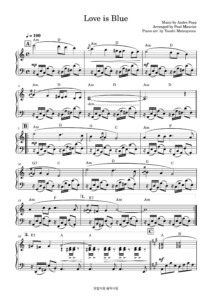 |
|
| André Previn – Play Like André Previn no. 1 |
 |
Andre Previn sheet music |
| Andre Previn – The Genius of (Piano Solos sheet music) |
 |
The genius of André Previn |
| Andre Rieu La Vie Est Belle (Songbook Collection As Performed By André Rieu) |
 |
Andre Rieu La Vie Est Belle (Songbook Collection As Performed By André Rieu) |
| Andrea Bocceli – Time To Say Goodbye | ||
| Andrea Boccelli – Time To Say Goodbye |
 |
|
| Andrea Bocelli Romanza songbook (Guitar & Voice) |
 |
Andrea Bocelli Romanza songbook |
| Andrea Bocelli – Anthology (songbook) |
 |
 |
| Andrea Bocelli – Con te partiro (Time to say Goodbye) Piano Solo arr | Andrea Bocelli – Con te partiro (Time to say Goodbye) Piano Solo | |
| Andrea Bocelli – Con te partiro (Time to say Goodbye) Piano Solo.mscz | ||
| Andrea Bocelli – The Best Of Songbook |
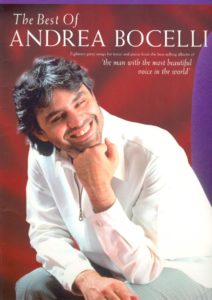 |
Andrea Bocelli best of |
| Andrea Bocelli Celine Dion The Prayer Easy Piano And Vocal By David Foster, Carole Bayer Sager, Alberto Testa And Tony Renis |
 |
|
| Andrea Bocelli Celine Dion – The Prayer – Easy Piano and Vocal by David Foster, Carole Bayer Sager, Alberto Testa and Tony Renis.mscz | ||
| Andrea Bocelli Cieli Di Toscana (Piano, guitar & Vocal) |
 |
Andrea Bocelli Cieli Di Toscana |
| Andrea Bocelli Sogno Songbook |
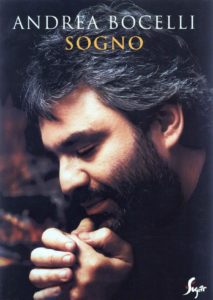 |
Andrea Bocelli sogno |
| Andrea Bocelli The Prayer |
 |
|
| Andrea Morricone – Nuovo Cinema Paradiso – Love Theme |
|
